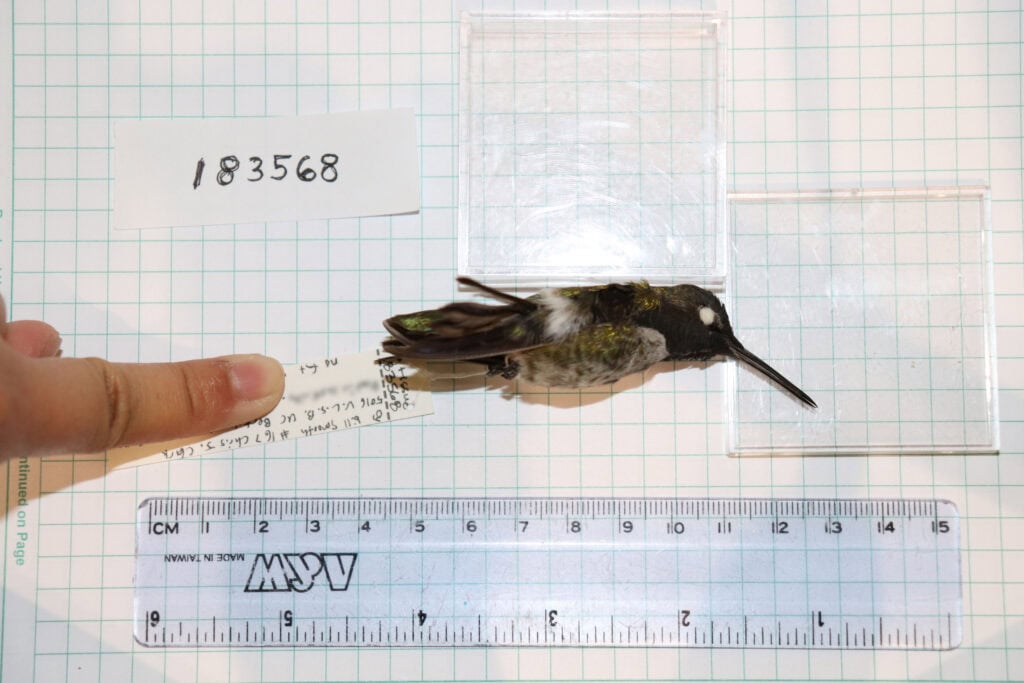Researchers link rapid range expansion and bill changes in Anna’s hummingbirds to decades of feeder use
The key to sharper beaks and a push northward for Anna’s hummingbirds may be hanging in backyards across the West: the classic hummingbird feeder.
“If you ever see these feeders, sometimes you have 30 hummingbirds jostling for position, so it’s a hyper-competitive environment,” said Faye Romero, a PhD student at the University of Rochester.
In a study published in Global Change Biology, scientists from the University of California, Berkeley, revealed that supplemental feeding, alongside urban development and the introduction of plants, has fueled the dramatic range expansion of Anna’s hummingbirds (Calypte anna) and altered their bill shape.
Once limited to sun-drenched Baja California, Anna’s hummingbirds have surged northward as far as southeast Alaska over the past 150 years. For years, scientists believed Anna’s hummingbirds expanded their range thanks to the introduction of eucalyptus plantations in the 1930s, which provided winter blooms in an otherwise food-scarce season and urbanization.
However, new research reveals more to the story by weaving together a rich tapestry of interdisciplinary evidence spanning six years, from dusty museum drawers and digitized newspapers to community science sightings and thermal video footage to test the drivers together. By tracing the rise of hummingbird feeders, urban development, and eucalyptus plantations, the researchers uncovered a more complex story behind the bird’s dramatic expansion and its changing physical form.

“We recapitulated that eucalyptus was probably an early driver of the expansion out of Southern California, but the effect of the feeders far outweighed the effects of the eucalyptus,” Romero, who worked on the project as an undergraduate researcher at UC Berkeley, said.
The battle of the beaks
Most hummingbird beaks have adapted over eons to specifically match the stems of the flowers whose nectar they feed on. But some Anna’s hummingbirds have become freed from the evolutionary constraints of flower shape. The birds appear to be rapidly changing to fit a new kind of battleground—one shaped not by petals but by fierce competition at sugar-filled feeders where their main goal is to slurp up as much sugar as fast as possible.
In response to these new survival challenges, male Anna’s hummingbirds are showing sleeker, sharper beaks, likely giving them an edge against the bird-feeder competition.
However, the shifts in beaks are not uniform across the range. Beaks in the northern part of the range tend to be shorter and smaller than those in the southern part of the range. This study was the first to demonstrate that Anna’s hummingbirds release heat through their bills while perched. Researchers hypothesize they do this to conserve warmth because smaller beaks limit heat loss, helping them survive in much colder environments than their original range.
By combining interdisciplinary research with out-of-the-box thinking, the researchers explored how the sugar-rich chaos of backyard feeders actively shapes both the life and bills of Anna’s hummingbirds. The findings document rapid, measurable changes in bill shape over the last century, providing a striking example of evolution in action and revealing how human choices can impact wildlife.





